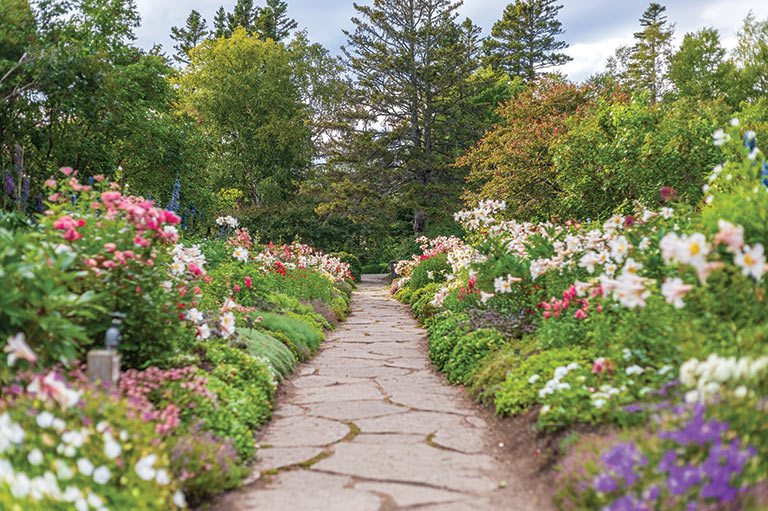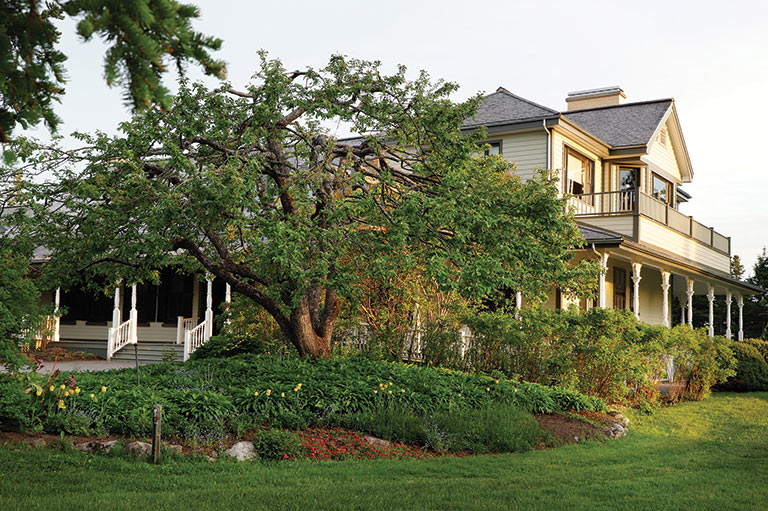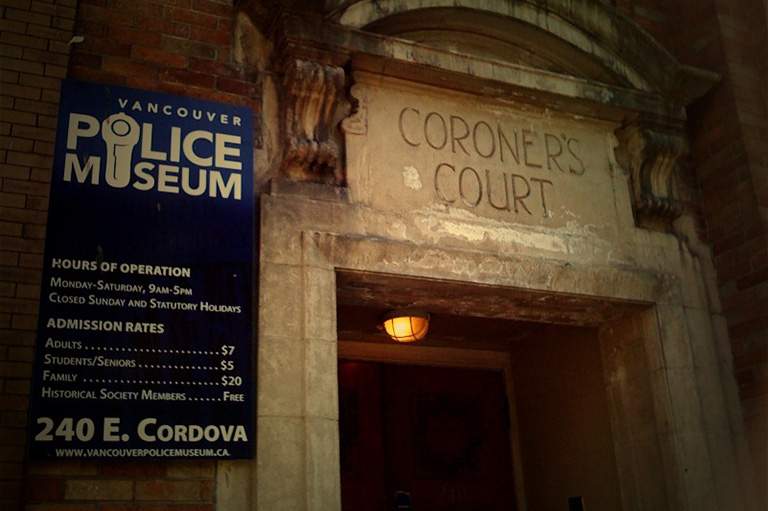Natural Selection

It’s a sunny autumn day as I travel along the picturesque Gaspé Peninsula, my vehicle hugging the shoreline of the steady St. Lawrence River. Although this region is alluring at any time of the calendar, the fall months are particularly pretty along auto-route 132 as the trees begin their seasonal transformation.
The Gaspésie (as the locals fondly refer to it) is well known for its wilderness parks — especially the Percé UNESCO Global Geopark, with its venerable geological sites. But in the Bas-Saint-Laurent is another gem: Reford Gardens (les Jardins de Métis), a former-fishing-camp-turned-remarkable-garden created by feminist and philanthropist Elsie Reford.
Reford was born Elsie Meighen on Jan. 22, 1872, in Perth, Ont. Her father, Robert Meighen, was president of the Lake of the Woods Milling Company, then the maker of Five Roses flour, which, at its height, was said to be the largest flour mill in the British Empire. Her mother, Elsie Stephen, was the sister of George Stephen, the first president of the Canadian Pacific Railway.
With 7 uniquely curated newsletters to choose from, we have something for everyone.
Elsie married Robert Wilson Reford, heir to the Robert Reford Company Ltd., a shipping and importing company. Living in Montreal’s Golden Square Mile, the Refords entertained politicians, industrialists and scientists, and they became well-known art collectors focused on European and Canadian art. After Elsie Reford underwent surgery at age 54, her doctor recommended she consider gardening during her recovery — and an obsession was born.
Located 300 kilometres northeast of Quebec City, Reford Gardens was a labour of love for Reford. Between 1926 and 1958, she worked with a team of locals to transform 20 acres (eight hectares) of spruce forest into 15 different gardens that are home to 3,000 varieties of plants — both endemic and those sourced from around the globe, including the Himalayan blue poppy, primulas and gentian.
This blooming feat required importing large quantities of flower bulbs and figuring out how to acclimatize them to Canadian conditions. But Reford prevailed and earned not only a garden with lilies but also a byline for articles she wrote on her process for the North American Lily Society and the United Kingdom’s Royal Horticultural Society.

Open to the public since 1962, Reford Gardens hosts the International Garden Festival from June to October. Recognized as one of the most important contemporary garden festivals in North America, the event features roughly 20 gardens created by approximately 70 local and international landscape architects from various disciplines.
For the average visitor, though, flowers make up a kind of welcoming committee at the entrance of Reford Gardens, easily luring guests to discover floral varieties in every shade imaginable. Trees act as friendly sentries, delineating the spaces between several themed gardens. From small white flowers with yellow centres to clumps of baby-pink and deep-red blooms planted between old railroad tracks to contemporary sculptures complementing and contrasting with the ever-changing landscape, these special spaces will inspire both amateur and professional gardeners.
Spruce and horse chestnut trees line the gardens’ outer edges, and seemingly every shade of green — from pale lime to deep hunter — is on display from the leaves and bushes. There’s a welcome calm when wandering the paths, where shaded areas provide a cool respite on sunny days. One imagines Reford would be thrilled to see the gardens thriving, with numerous visitors regularly exploring the flora almost 60 years after her death in 1967.
Advertisement

Historian Alexander Reford, Elsie’s great-grandson, has been the gardens’ director since 1995. He’s committed to both the land and to highlighting his great-grandmother’s numerous achievements, including through the books The Reford Gardens: Elsie’s Paradise and Treasures of the Reford Gardens: Elsie’s Floral Legacy. Those achievements include co-founding the Women’s Canadian Club of Montreal in 1907 to encourage women to get involved in politics and working at the Montreal Maternity Hospital (now part of the McGill University Health Centre) to promote the health of women and children.
Reford Gardens became a National Historic Site in 1995 and a Quebec heritage site in 2013. The gardens were also the subject of Il etait deux fois un jardin/Twice Upon a Garden, a documentary about Reford by Montreal filmmaker Philippe Baylaucq.
In 2024, Reford was added to the Répertoire du patrimoine culturel du Québec as a designated historical figure on International Women’s Day, and Les Éditions Umanium published Elsie Reford: 150 Objects of Passion, a book celebrating her life through stories and archival photographs of 150 personal objects.

IF YOU GO
Located between the Gaspé Peninsula towns of Matane and Rimouski on the south shore of the St. Lawrence River, Reford Gardens is open seasonally from June until the end of October. Tickets range from $11 to $23, plus taxes, for adults and students; children under age 13 have free access.
A trail through the gardens is open year-round, but there are no services available from November until the end of May. Service animals are permitted, and small dogs or cats can be brought on property, but only if they’re confined to pet carriers or wagons.
The closest airport and Via Rail train station are both in nearby Mont-Joli. Visitors can also access the gardens via Rte 132. Reford Gardens are 3½ hours northeast of Quebec City and 5½ hours northeast of Montreal.
We hope you’ll help us continue to share fascinating stories about Canada’s past by making a donation to Canada’s History Society today.
We highlight our nation’s diverse past by telling stories that illuminate the people, places, and events that unite us as Canadians, and by making those stories accessible to everyone through our free online content.
We are a registered charity that depends on contributions from readers like you to share inspiring and informative stories with students and citizens of all ages — award-winning stories written by Canada’s top historians, authors, journalists, and history enthusiasts.
Any amount helps, or better yet, start a monthly donation today. Your support makes all the difference. Thank you!
Themes associated with this article
Advertisement
You might also like...
Save as much as 40% off the cover price! 4 issues per year as low as $29.95. Available in print and digital. Tariff-exempt!








